MOTORNET: Volvo XC90 vs Landrover Discovery
Volvo XC90 vs Landrover Discovery
MOTORNET with Karl Ferguson
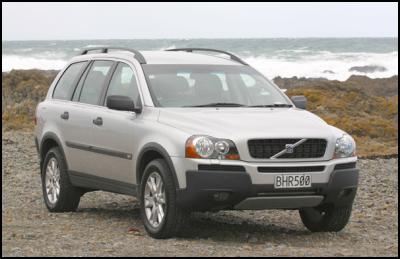
Landrover
Discovery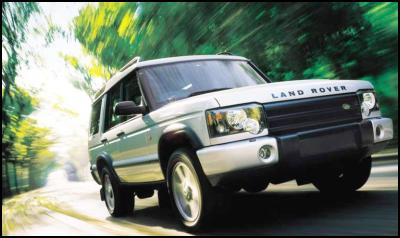
Sports Utility Vehicles, or SUVs as they are more commonly known, are taking over. Gone are the days when a simple station wagon or large sedan provided adequate family transportation, an SUV is now a must have. And this craze is reflected in the choice of SUV available – there isn't a single major carmaker today that doesn't have at least one on offer.
So what's driving this demand? Is it the raised driving position, the perception of improved safety, or perhaps the go-anywhere attitude?
Many theories abound, but one thing's for sure; it’s not the desire to go off-road. In fact, most manufacturers will concede that the majority of SUVs will stray off the tarmac just two percent of their working lives. In other words, a whopping 98 percent of all miles done by SUVs will be on our highways and by-ways...
Not surprisingly, this is changing the way manufacturers approach the SUV market and changing the vehicles we drive. Enter the 2003 Volvo XC90. Definitely a new kid on the block, since its launch in the last months of 2002, it has been heaped with accolades and prizes, and heralded as one of the best SUVs around. Indeed, the US car magazine Motor Trend proclaimed it Sport Utility of the Year for 2003.
The Land Rover Discovery on the other hand takes a more traditional approach, and despite being a little long in the tooth, it’s still a popular favourite. Land Rover is widely credited with fathering the modern concept of the off-roader which culminated in combining luxury motoring with off-roading when the Range Rover was first launched way back in the 70s. The current Discovery model was launched in early 1999, and since then has undergone a number of facelifts most recently for 2003.
On first acquaintance the two would appear to have much in common. Both are in the upper end of the SUV price spectrum. Both have the capacity (or can be optioned) to seat seven, and both are well equipped, luxury vehicles. But appearances can be deceiving.
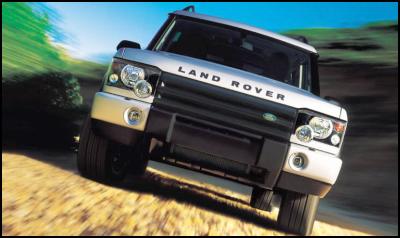
There is much to be said for the Discovery's rugged, even classic good looks. Its tall roofline and squared edges suggest a no-nonsense approach to tackling the difficult business of off-roading. For 2003, Land Rover say they have made over 700 changes and enhancements to the Discovery. Externally, the most startling alteration is the addition of ‘twin pocket’ halogen headlights which visually bring the Disco into line with its big brother Range Rover. Better night vision aside, the new look headlights do help modernise the exterior.
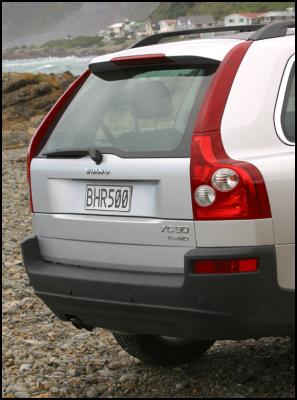
The XC90 in contrast looks every bit a product of the new millennium. The visual cues are all Volvo – from the sculpted hood to the taillight configuration. It doesn’t have the same muscular stance of the Discovery, looking more like a grown-up Volvo stationwagon. It also looks surprisingly compact and it comes as a surprise to learn that its roofline stands a significant nine inches taller than the XC70 Cross Country wagon, though it’s only slightly longer.
If the exterior styling merely hints at the differences behind these two vehicles, it's not until you get behind the wheel that they become truly apparent.
The Discovery has a tall, upright seating position providing a commanding view across its expansive bonnet and beyond. It has a go-anywhere feel and everything from the grab handles to the stereo controls feel solid to the touch. Unfortunately, the cabin’s ergonomics leave a little to be desired. Some of the gauges are obscured by the steering wheel, and while it all fits together, it lacks the cohesiveness of its Swedish rival.
And, despite its size, the Disco feels a little on the cramped side. There’s not a lot of room in the front, and even less for those in the back. Rear doors are narrow and the less mobile would struggle to get in and out easily, while the optional jump seats are best suited to children. On the plus side, rear passengers are treated to stadium-like elevated seating ensuring great visibility while the headroom is second to none.
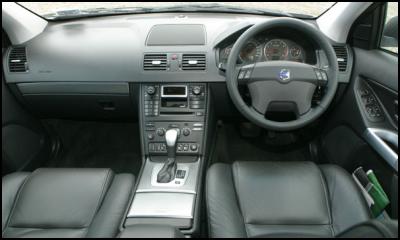
The Volvo feels much more accessible. The wide doors give way to a low floor and limousine like seats. Like a well-crafted piece of Scandinavian furniture, everything in the cabin feels well put together. Your hands fall naturally to the well placed easy to use controls, while the fit and finish of the interior materials is first rate. The multi-adjustable seats fold every which way, and while getting all the seats flat required a quick check of the manual, done once is all it will take. With the rear seats flat, there’s a good amount of cargo room, while the split tailgate opens easily.
On the road, it is the XC90 that most impresses. Given how compact it looks on the outside, it’s almost a shock to realise that this is still a big vehicle. Once underway though, the Volvo shrinks around the driver. Put simply, the XC90 drives just like a car. Steering is neutral – even benign – and it attacks corners with all the sense of purpose that you might expect from a much smaller passenger vehicle.
The Discovery is almost truck like in comparison. At low speeds it feels somewhat ungainly with heavy steering and an unwieldy turning circle. It's difficult for the driver not to feel a certain detachment from the Discovery, as if piloting it rather than driving it. While there is never any sense of panic in cornering, the Land Rover's size and high point of gravity result in a slightly wallowing feel as you drift around corners, with body roll a great deal more pronounced than in the Volvo. For all that, it’s surprising how quickly you adjust to the quirkiness of the Disco driving style and while it will never feel as agile as the XC90, it has a certain surefootedness that is reassuring.
Of course, with both vehicles weighing around 2000kg apiece, what’s under the bonnet makes for an important piece of the equation. The Land Rover takes the more conventional road equipping the Discovery SE with a 4.0 litre V8 engine which develops 136kw at 4,750rpm and 340Nm of torque at 2,600 rpm. On the XC90 T6 (test vehicle) Volvo opts for a 2.9 litre straight six cylinder engine, but not to be outdone on engine capacity, adds dual turbochargers to the mix to spice things up a bit. And spice things up they do. The XC90 T6 develops 200kw at 5,100 rpm and 380Nm of torque at just 1800 rpms. In other words, there’s plenty of power on offer in both these vehicles, though the Volvo wins in sheer acceleration terms. Barely touch the accelerator and the Volvo is off. Volvo claim 0-100 kp/h in just 9.3 seconds. Even allowing for optimism on the part of the manufacturer that is a very quick time indeed for a large SUV.
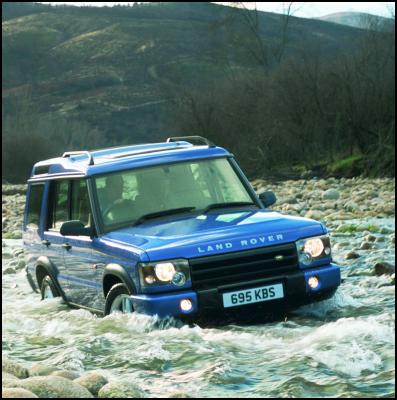
Off-road it’s the Discovery that comes into its own. Where the Land Rover would happily bash through unchartered territory using its large engine capacity and low-down torque to get it through, Volvo drivers would be wise to employ a little more caution when taking the XC90 for a weekend jaunt. The Land Rover has permanent 4WD and is equipped with a two-speed low range transfer gearbox for serious off-roading. It also has electronic traction control, meaning all the engine’s power can be transferred to just one wheel with traction. It feels pretty much indestructible.
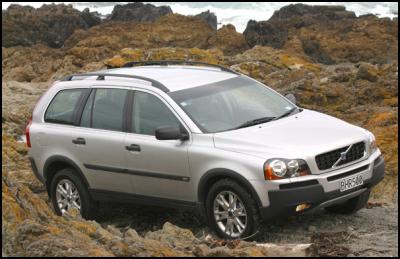
The Volvo on the other hand drives through just the front wheels most of the time. In the event that one of the Volvo’s wheels start to spin, the All Wheel Drive system kicks in virtually instantaneously, and much like on the Landrover, if a wheel spins on one side, more power goes instantly to the opposite wheel. It’s a system that works well and ensures great stability, but it has its limitations – especially in demanding off-roading situations.
If it’s luxury you’re looking for, you can’t go wrong with either vehicle. Over the standard Discovery S – which includes plenty of luxury items in itself – the SE adds Alcantara upholstery, a 12 speaker audio system and 6-disc CD changer. The Volvo isn’t short of a touch of luxury. Standout items include reversing aids for parking, an on-board trip computer, and a truly unforgettable premium sound system with 12 speakers – not to mention the welcome addition of a tiptronic (or clutchless manual) gearbox for really spirited driving sessions.
One could wax on lyrical about all the Volvo’s added safety features, but put simply, it’s very comprehensive. The New Car Assessment Programme gives it five stars – one of only two SUVs to ever get such a high rating. Rest assured the Land Rover has safety covered as well offering all the usual safety extras you might expect, such as driver and passenger airbags, and side impact beams in both front and rear doors, but given Volvo’s safety record and newness, it has the edge over the Land Rover in this department.
Despite their obvious similarities, philosophically these vehicles are quite different. Put simply, the Volvo is designed to be used like a car but comes with the added flexibility of being able to transport a bunch of kids to a soccer game, and handle a weekends skiing, while having all the street cred of a serious 4WD vehicle. The Land Rover, on the other hand is basically designed to be used off-road, but can still usefully double as an urban transport vehicle albeit without quite the dynamics of a passenger car.
Whichever approach best suits your lifestyle, the good news is that the SUV market has you covered. And if it tends towards the softer lifestyle, who’s going to know given the go-anywhere appearance of most SUVs? As they say, more often than we might like to admit, perceptions and reality can equal the same thing.


 Keith Rankin: Zero-Sum Fiscal Narratives
Keith Rankin: Zero-Sum Fiscal Narratives Eugene Doyle: Chinese Jet Shoots Down France’s Best Fighter; NZ And Australia Should Pay Attention
Eugene Doyle: Chinese Jet Shoots Down France’s Best Fighter; NZ And Australia Should Pay Attention Ian Powell: “I Can Confirm They Are Hypotheticals Drawn Largely From Anecdotes And Issues The Minister Has Heard About.”
Ian Powell: “I Can Confirm They Are Hypotheticals Drawn Largely From Anecdotes And Issues The Minister Has Heard About.” Gordon Campbell: On NZ’s Silence Over Gaza, And Creeping Health Privatisation
Gordon Campbell: On NZ’s Silence Over Gaza, And Creeping Health Privatisation Richard S. Ehrlich: Pakistan & China Down 6 Indian Warplanes
Richard S. Ehrlich: Pakistan & China Down 6 Indian Warplanes Keith Rankin: War In Sudan
Keith Rankin: War In Sudan